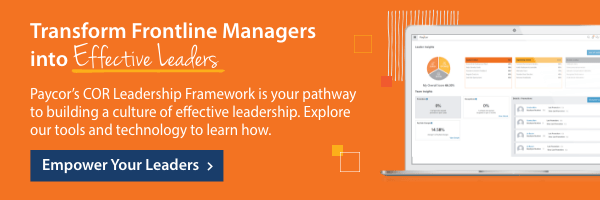At first, organizational alignment might sound like a mouthful. But this term is more than a buzzword or a trend. Here’s a quick definition:
Organizational alignment (or corporate alignment) is when your company’s creative vision matches up with the way you conduct business, at every level.
Think of it like integrity, but for a business instead of a person. When everyone in your company is on the same page, working toward shared goals, and making measurable progress, your organization is probably aligned.
Why is Organizational Alignment Important?
Aligned companies have a competitive advantage, especially when it comes to HR. When your whole team feels aligned with company culture, you improve retention and job satisfaction. Alignment also impacts your bottom line.
According to one study, “when people understand and are excited about the direction their company is taking, the company’s earnings margin is twice as likely to be above the median.” (McKinsey). In other words: emotional investment matters. When your team buys into the company’s mission, vision, and strategy, your profit margins will probably go up.
The Role of Leaders in Corporate Alignment
Just like company culture, organizational alignment starts at the top. Leaders set the tone for the rest of the team. That means everything from defining clear values to creating a strategy – but more on that in a minute.
After leaders get the ball rolling, team alignment gets more and more important. That’s where recruiting comes in. You can’t build a strong culture by micromanaging relationships between your employees. It’s better to hire people who are already aligned with your company’s values, so you can trust them to work toward common goals.
Alignment doesn’t end there. Once you assemble a great team, they’ll need the right tools to do well at work. For example, do your managers have enough training? Do your employees have a psychologically safe way to share feedback? Organizational alignment is an ongoing process, and it can impact every part of your business.
How do you Achieve Corporate Alignment?
Alignment means something slightly different for every business, just like integrity means something different for every person. To achieve corporate alignment in your company, start by following these steps:
- Define Core Values
What guiding principles does your company follow? There’s no wrong answer to this question, but it’s important to be specific. For example, one of Paycor’s values is “Take Care of Each Other.” Employees look out for each other, which inspires people to do their best work. When you feel supported and valued at work, it’s easy to align with your team members.
- Set Organizational Goals
Before you can achieve success, you have to know what it looks like. Make sure your KPIs include business goals and internal, cultural goals. Your annual revenue is important – and so is the number of women in leadership. (And in fact, they’re related. A study by the Peterson Institute for International Economics found that companies with women leaders are more profitable.) - Communicate Your Strategy
If you want to achieve alignment, you need to get your team on board. Share your strategic priorities with employees to help them see the big picture. Being transparent shows that you trust them and value their expertise. It also empowers them. When your team understands the why behind the why, they can think outside the box and come up with better solutions. - Develop Your Leaders
Over 50% of managers have no training at all (HRDive). That not only lowers their job satisfaction; it also lowers engagement. Chances are, your leaders want to support their teams, but most of them don’t know how. They need better tools to align with their own bosses and their direct reports. HR solutions like the COR Leadership Framework empower everyone to get on the same page. - Engage Employees
Organizational alignment means everyone in your company – from the CEO to the summer intern – shares common goals, and knows it. Encourage your team to connect with each other. Cross-functional collaboration makes a huge difference here. When people work together across departments and job descriptions, they’ll feel more aligned with your larger vision, and therefore more engaged. And of course, employee engagement drives retention (Forbes). - Optimize Workload
Optimization is a balancing act. To meet financial goals without burning anyone out, you need to keep your finger on the pulse of employees’ needs. When you push too hard, you increase turnover. On the other hand, if you let go completely, your business could suffer. When you find the right balance and employees will feel supported, you’ll see a rise in loyalty and morale. This can also give them a sense of camaraderie and improve company culture.
To find the right balance, you need to understand your team’s needs, in and outside of work. Employee surveys are a great place to start. - Track Your Progress
Strategic priorities are dynamic. They change along with industry trends, technological innovations, and the ups and downs of the economy. Your values will probably stay the same for years, but your short-term business objectives could be different every quarter. To meet your long-term goals, you need clear, specific data. Metrics like turnover rate and the total cost of absenteeism can tell you if your employees are aligned. Analyze these numbers to find issues before they become problems, and use that information to make an action plan. - Celebrate Wins
69% of employees would work harder if they felt more valued (Forbes). Celebrating your team’s success makes them feel seen and appreciated at work. It’s also a chance to connect socially, talk about how their efforts support your vision, and dream about the future. Celebrations might seem like a distraction, but they’re actually an important way to boost employee engagement.
How Paycor Helps
Paycor’s COR Leadership Framework is purpose-built for leaders. This suite of tools empowers you to connect with your team and become a better leader, with exactly the right skills to support them.
- Start by launching a Pulse survey to learn about their needs, and get employee feedback in a psychologically safe environment.
- Then, the COR Leadership Dashboard lets you analyze results, track your team’s progress, and connect directly with employees.
- Use those insights to choose learning tracks on Paycor Paths, which gives managers the training they need.
With these tools, you can develop your team and your own leadership skills at the same time. Everybody wins.











